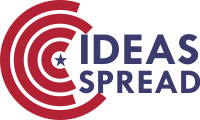The Effects of Integrating E-Media Piano in Teaching Music
Abstract
Historically, schools, universities and adult education providers have used a “lecture-based” teaching model. This approach to learning was developed during the industrial age, some two centuries ago. The concept is for students to sit passively in rows of chairs or tables all facing the presenter, who usually resides at a lectern. A lecture is a “one-to-many” form of communication, involving little or no audience participation. It is authoritarian, by nature. For an information dump a lecture works fine. The development of engaging lecture activities requires a significant amount of instructor preparation and limits the time available to provide traditional lectures. However, the positive results of this study suggest the need for a restructuring of the plain classroom lecture to incorporate more engaging lectures to improve both the qualitative experiences and performance levels of students.
Due to the fast changing society and modernization, there is also change in interest of the students learning styles, so the researchers conducted a study about the effect of educational software in teaching music.
This research determined the effects of integrating e-media piano in teaching music at Santiago National High School. Specifically, it dealt with the following: the pretest result of the control and experimental group, the post-test of the two groups; and the significant difference between the pretest and posttest results of the two groups.
The input of the study was determined by administering the researcher-made test which is the principal tool for gathering the needed data. The gathered data underwent statistical treatments such as mean, standard deviation, t-test for independent means and t-test for dependent means.
A pretest was administered from the two study groups before the conduct of the experiment; this is to determine if the groups were equally comparable in terms of intellectual ability. The validated and reliability teacher-made test is composed of twenty-five (25) items. This covered topics about the different elements of music such as melody, tempo, dynamics, rhythm, pitch, harmony, texture, and timbre. Moreover, both groups were given posttest after the experimental period had been conducted. The same 25 multiple choice item tests was given to the experimental and control group to find out if the use of E- Media piano software had an effect to the students’ performance in music. Nevertheless, the latter was superior than the former. Thus, the effectiveness of E-media is notable, enhancing the learners’ capacity for acquisition and retention of information.
The integration of e-media piano software to traditional classroom instruction may be encouraged. Educational software specifically designed to fit the learning objectives can be used as motivation, enrichment activity, and as an assessment tool to classroom instruction. The active participation and interest that educational software may provide to the teaching and learning process should be exploited. Educational software made and developed appropriately to the level of the learners may be adopted not only in music but in the other components of M.A.P.E.H as well. Other strategies which may integrate other trends articulated with the interest of today’s learners may also be adapted as exposing students to modernized school can achieve a quality education and can produce lifelong learning.


This work is licensed under a Creative Commons Attribution 4.0 International License.
Copyright for this article is retained by the author(s), with first publication rights granted to the journal.
This is an open-access article distributed under the terms and conditions of the Creative Commons Attribution license (http://creativecommons.org/licenses/by/4.0/).








1.png)














